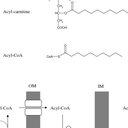OBJECTIVE
Serum carbohydrate antigen 19-9 (CA19-9) is a widely used tumour marker for cholangiocarcinoma (CCA). However, it is not a necessarily good CCA marker in terms of diagnostic accuracy. The purpose of this study is to evaluate the diagnostic value of
Wisteria floribundaagglutinin-sialylated Mucin1 (WFA-MUC1) and the prognostic role of Mucin1 (MUC1) in human CCA.
Meta-analysis.Studies published in PubMed, Web of Science, The Cochrane Library and the China National Knowledge Infrastructure up to 11 October 2017.We included reports assessing the diagnostic capacity of WFA-MUC1 and the prognostic role of MUC1 in CCA. The receiver operating characteristic curve (ROC) of WFA-MUC1 and/or CA19-9 was described, and the HRs including 95% CI and the corresponding p value for MUC1 can be extracted.Two independent researchers extracted data and assessed risk of bias. The diagnostic sensitivity and specificity data of WFA-MUC1 were extracted and analysed as bivariate data. Pooled HRs and its 95% CI for MUC1 were calculated with a random-effects meta-analysis model on overall survival of resectable CCA.Sixteen reports were included in this study. The pooled sensitivity and specificity of WFA-MUC1 were 0.76 (95% CI 0.71 to 0.81) and 0.72 (95% CI 0.59 to 0.83) in serum, 0.85 (95% CI 0.81 to 0.89) and 0.72 (95% CI 0.64 to 0.80) in bile and 0.72 (95% CI 0.50 to 0.87) and 0.85 (95% CI 0.70 to 0.93) in tissue, respectively. The summary ROC (SROC) were 0.77 (95% CI 0.73 to 0.81) in serum, 0.88 (95% CI 0.85 to 0.90) in bile and 0.86 (95% CI 0.83 to 0.89) in tissue, respectively. Furthermore, the pooled sensitivity and specificity and the SROC of CA19-9 in serum were 0.67 (95% CI 0.61 to 0.72), 0.86 (95% CI 0.75 to 0.93) and 0.75 (95% CI 0.71 to 0.79), respectively. The pooled HRs for MUC1 was 2.20 (95% CI 1.57 to 3.01) in CCA and 4.17 (95% CI 1.71 to 10.17) in mass-forming intrahepatic CCA.Compared with CA19-9, WFA-MUC1 was shown to possess stronger diagnostic capability. MUC1 could serve as a prognosis factor for poor outcomes of CCA, particularly, mass-forming intrahepatic CCA.


